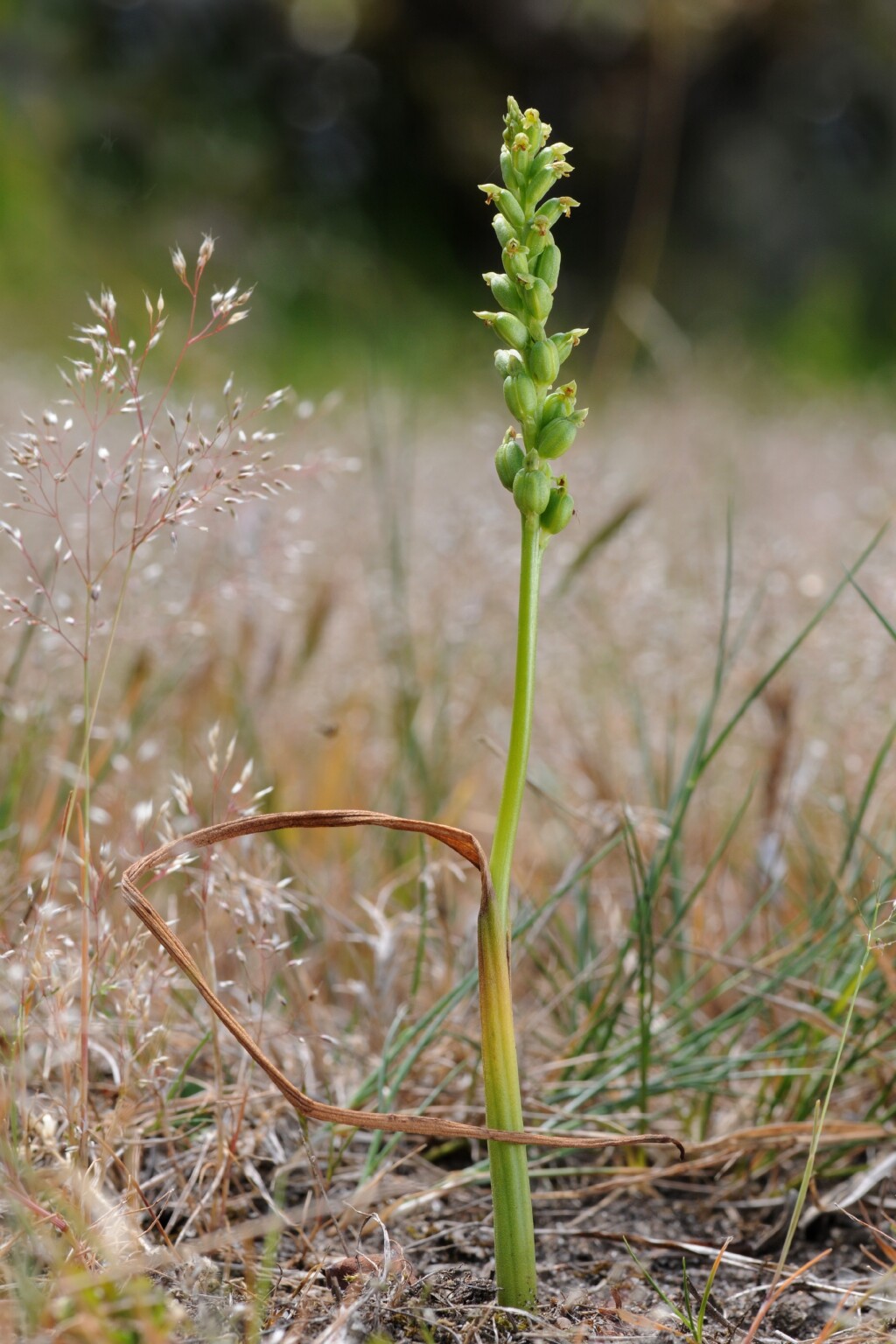Microtis unifolia
(G.Forst.) Rchb.f. Common Onion-orchidFlowering stem 10–70 cm tall, slender to robust, fleshy. Leaf erect or drooping, 10–80 cm long, hollow; sheath opening well below inflorescence. Flowers 10–100, green or yellow-green, often lightly scented, spreading, in moderately to quite dense spike-like raceme 3–13 cm long; ovary obovoid to almost ellipsoid, 3–4 mm long, plump, on relatively stout, short pedicel, standing out from stem; dorsal sepal ovate to circular, 2–4 mm long, hooded, margin evenly rounded, apex obtuse; lateral sepals linear-oblong to ovate-lanceolate, shorter than dorsal sepal, almost acute, spreading, recurved to tightly revolute; petals lanceolate and sickle-shaped or somewhat ovate-lanceolate, shorter than dorsal sepal, partly concealed by dorsal sepal. Labellum pressed against ovary, more or less oblong, 2–2.5 mm long; margins minutely notched or wrinkled; apex notched; lamina with saddle-shaped basal calli, flattened rather than convex, and variously shaped apical to medial callus. Column with distinct ovate auricles. Flowers Oct.–Jan.
LoM, MuM, Wim, GleP, Brid, VVP, VRiv, MuF, GipP, OtP, WaP, Gold, CVU, GGr, DunT, NIS, EGL, EGU, WPro, HSF, HNF, OtR, Strz, MonT, VAlp. All States except NT. Occurs in a wide range of habitats, from swamps to rocky outcrops, open grasslands, and occasionally seen in urban situations. Widespread and abundant in Victoria.
There is much variation in flower morphology within this taxon and a number of distinct variants probably warrant taxonomic recognition. One variant of Microtis unifolia is known from peat bogs, and has tiny flowers, a small ovary, a short blunt dorsal sepal and a curled-under, square labellum which is not bifid.
Some M. unifolia can apparently hybridize with both M. rara and M. parviflora in the field. See also notes under M. rara.
Entwisle, T.J.; Bates, R.J. (1994). Microtis. In: Walsh, N.G.; Entwisle, T.J., Flora of Victoria Vol. 2, Ferns and Allied Plants, Conifers and Monocotyledons, pp. 865–868. Inkata Press, Melbourne.
 Spinning
Spinning



